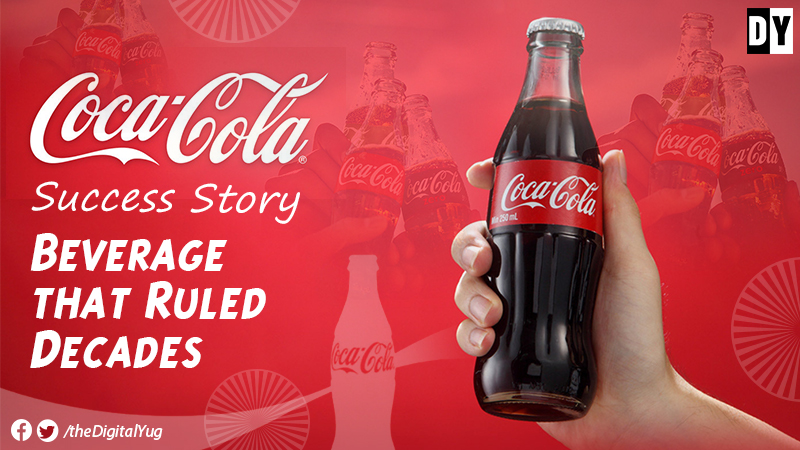
We all know what Coca-Cola is and how well we understand the word. Whenever we have a soft drink outside, it is almost always from this Beverage Company. It became so well-known in the late twentieth century that it dominated the global market for decades until the invention of tech behemoths and internet-based product companies. But do you know how it all began and how it was never supposed to be that way? You’ve seen this company’s growth, but you’ve never looked back at its past. So, if you want to learn more about this Softdrink Giant, sit down and read this fascinating blog with patience.
Coca-cola is named after two of the original ingredients that were used to make it in the late 1800s: coca leaves and kola nuts (a source of caffeine). John Stith Pemberton of Columbus, Georgia, developed the product as a patent medicine and marketed it as a Medicinal Beverage. Coca-cola was first sold on May 8, 1886, at Jacob’s Pharmacy in Atlanta, Georgia, for five cents per bottle. In the United States at the time, carbonated water was thought to be beneficial to one’s health, and Pemberton stated that his new drink could cure a variety of ailments, including opium addiction, indigestion, nerve problems, headaches, and impotence. Frank M. Robinson, a bookkeeper at Pemberton, is credited with naming the items and designing the logo. Robinson was left to produce, market, and sell Coca-Cola on his own after John left.
Asa Griggs Candler, an American businessman, bought the Coca-cola formula and brand from Pemberton’s heirs in 1889 with the intention of advertising and selling it as a beverage to regular customers. Candler officially founded the Coca-Cola Company in Atlanta in 1892. Coca-Cola distribution spread to soda fountains outside of Atlanta under Mr. Candler’s leadership.
Coca-cola was distributed in every state of the nation by 1895. Coca-first Cola’s advertising said, “Coca-Cola. It’s delicious! It’s refreshing! It’s thrilling! energizing!” Coca-Cola had about 60% of the market share in 1948. Ernest Woodruff’s Trust Company of Georgia bought the company in 1919. Owing to the introduction of new rivals, such as Pepsi, The Coca-Cola Company’s market share fell to 21.8 percent by 1984.
The ten business decisions that transformed Coca-Cola from a tiny Atlanta pharmacy’s startup beverage to one of the world’s most recognized brands over the last 130 years.
Late 1990s-early 2000sCoca-Cola started discussing a transition from becoming primarily a sparkling soda business to being a “complete beverage company” in the late 1990s. Several early product launches, especially in the United States, quickly captured the growing consumer demand for non-carbonated beverages. Dasani was first introduced in the United States in 1999, followed by the introduction of Simply juices in 2001, Gold Peak teas in 2006, and the acquisition of vitamin-water and SmartWater in 2007. Today, each of these brands is one of the company’s 21 that generates more than $1 billion in annual retail sales.
Finally, all national, then global, ads included variants of “Drink Coca-Cola/Delicious and relaxing” and were designed in a consistent style.
Final WordsOutside of the US, the company has continued to acquire or invest in brands that respond to the plethora of beverage options now available to consumers around the world. AdeS, a Latin American brand; Chi Limited, a successful West African producer of dairy and juice beverages; and China Culliangwang, a manufacturer of plant-based protein drinks produced from high-quality agricultural sources, are just a few of the recent global acquisitions or investments.
Latest Updates from around the world
Most read stories, topics, and videos
Latest Updates from around the world
2 Comment
Hi there, everything is going well here and ofcourse every one is sharing information, that's in fact good, keep up writing.
Dive into the massive galaxy of EVE Online. Find your fleet today. Create alongside hundreds of thousands of players worldwide. [url=https://www.eveonline.com/signup?invc=46758c20-63e3-4816-aa0e-f91cff26ade4]Free registration[/url]